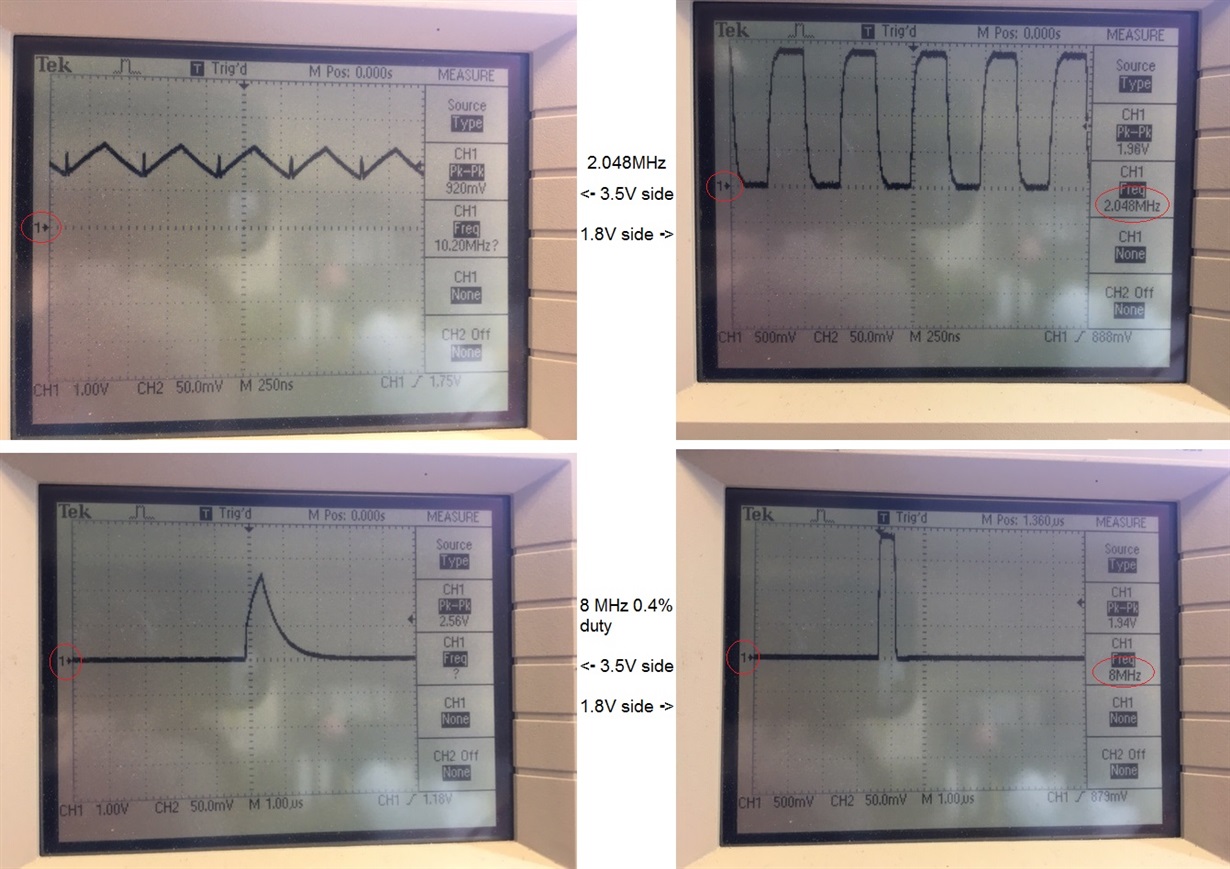Other Parts Discussed in Thread: TLV320AIC3204
Hello,
Maybe someone can shed a bit of light...
I have a TXB0108. VCCa (pin 2) is tied to 1.8V and VCCb (pin 19) is tied to 3.5V.
On pin 9 (A8), I have a 1.8V square 2.048MHz 50% duty signal coming-in and I expect to get the same frequency on pin 12 but with at 3.5V.
However, when I put my oscilloscope on pin 12, instead, instead of geting the nice 3.5V 2.048MHz signal, I get an approximate 1v pk-pk triangular wave with a DC offset of around 1.8V (so triangular waveform wings from around 1.3V to 2.2V).
Same idea with pin 8 where I input an 8kHz 5% (this time it's five, not fifty) duty signal... on the high side pin 13, this time, the low-to-high transition is a half triangle and the high-to-low side is a round slope (whole triangle sort of like the shape of a shark fin).
I really don't understand what can cause this behaviour. I tied OE pin to 1.8V and I used a 0.1uF cap on each supply.
What am I missing?
Thanks!
Benoit


